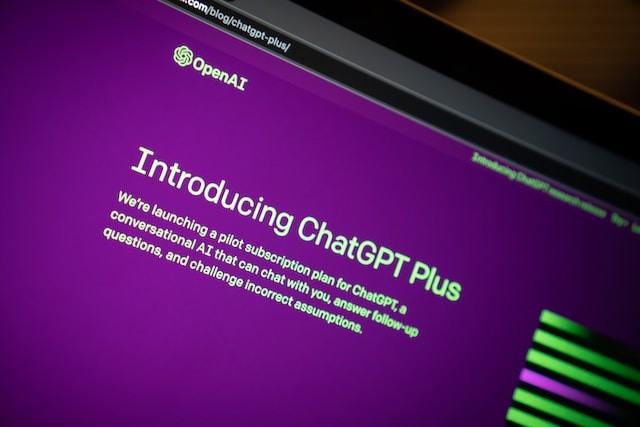
While Artificial Intelligence (AI) itself is not new, technology utilizing AI that is sophisticated enough to appeal to the general public and impact their daily lives is relatively new. ChatGPT, a chatbot created by OpenAI and released in November 2022, is an excellent example of this technology. Since then, it has drawn much attention, particularly concerning its consequences for producing academic and professional content.
What Is ChatGPT?
ChatGPT is a language model developed by OpenAI, specifically part of the GPT (Generative Pre-trained Transformer) family. It is designed to understand and generate human-like text based on the input it receives.
It's not perfect, as OpenAI readily admits to several limitations of ChatGPT, such as writing "plausible-sounding, but incorrect or nonsensical answers." Despite this and other drawbacks to using ChatGPT, it's found plenty of uses in the workplace.
On November 30, ChatGPT celebrates its first birthday, and a lot has happened since the popular AI chatbot debuted. OpenAI allowed users to start experimenting with ChatGPT in 2022. The chatbot allowed users to ask questions and receive conversational responses, making it feel more like speaking with a natural person than an artificial intelligence system.
The popularity of ChatGPT quickly spread, having more than one million users five days after it was launched, as per OpenAI's CEO at the time, Greg Brockman. The application had about 100 million monthly active users, according to a UBS study conducted two months later in January 2023. A similar Web analysis also indicates that ChatGPT received about 1.7 billion visits globally in October.
Using ChatGPT at Work
Artificial intelligence has advanced significantly in the last few years across several domains; one noteworthy use is the introduction of chatbots, such as ChatGPT, into the workplace. Using advanced language models in the workplace raises significant concerns about its implications as businesses look for creative ways to improve customer service, productivity, and communication.
Numerous ChatGPT applications for the workplace are unlikely to cause issues or violate any laws or company policies. However, users of ChatGPT for work may still need to exercise caution in how and when they use this technology.
Enhanced Communication
Among the main advantages of incorporating ChatGPT into the office is the possibility of enhanced communication. Chatbots can help staff members with various jobs, answer questions, and promote accessible team communication. Real-time human-like response generation can improve internal communication by streamlining it and increasing its effectiveness.
Automated Customer Service
Immediate answers to customer inquiries via ChatGPT's integration could completely transform customer service. Customers may be more satisfied due to receiving timely and accurate information. Organizations must carefully balance the need for human touch in some customer interactions with automation to avoid potential pitfalls.
Balancing Automation and Human Touch
Automation can make processes more efficient, but businesses must also balance using AI's capabilities with retaining a human element in interactions. Specific tasks call for human traits like empathy, creativity, and subtle understanding, which AI finds challenging to imitate.
Potential Risks ChatGPT May Cause
Many possible risks are associated with integrating ChatGPT into diverse applications and environments. Users, organizations, and developers must be aware of these risks and take the necessary precautions to reduce them.
Legal Compliance
Businesses utilizing ChatGPT must ensure its implementation complies with all applicable laws and regulations. There could be legal repercussions if industry rules or privacy laws are broken.
Privacy Concerns
Sensitive or private information may unintentionally be revealed in responses produced by the model. Strong privacy policies must be put in place by organizations to stop inadvertent disclosure of confidential information.
Bias and Fairness
Biases found in its training data may be inherited and maintained by ChatGPT. This may result in the creation of discriminatory or biased content, which could be harmful or reinforce existing societal biases.
Inaccurate or Misleading Information
Responses from ChatGPT may seem believable, but they may be misleading or inaccurate in terms of facts. This may result in disseminating false information in different settings, influencing public opinion and decision-making.
Insensitive or Offensive Output
ChatGPT can produce offensive, indecent, or insensitive content. This could harm user experiences and damage the reputation of businesses that use the model.
There is a lot of potential for ChatGPT to change customer service, productivity, and communication in the workplace. However, organizations must handle the difficulties responsibly, considering ethical issues and ensuring that data is held securely. Organizations can open up new possibilities and build a more productive and creative workplace in the future by carefully embracing AI technologies.



